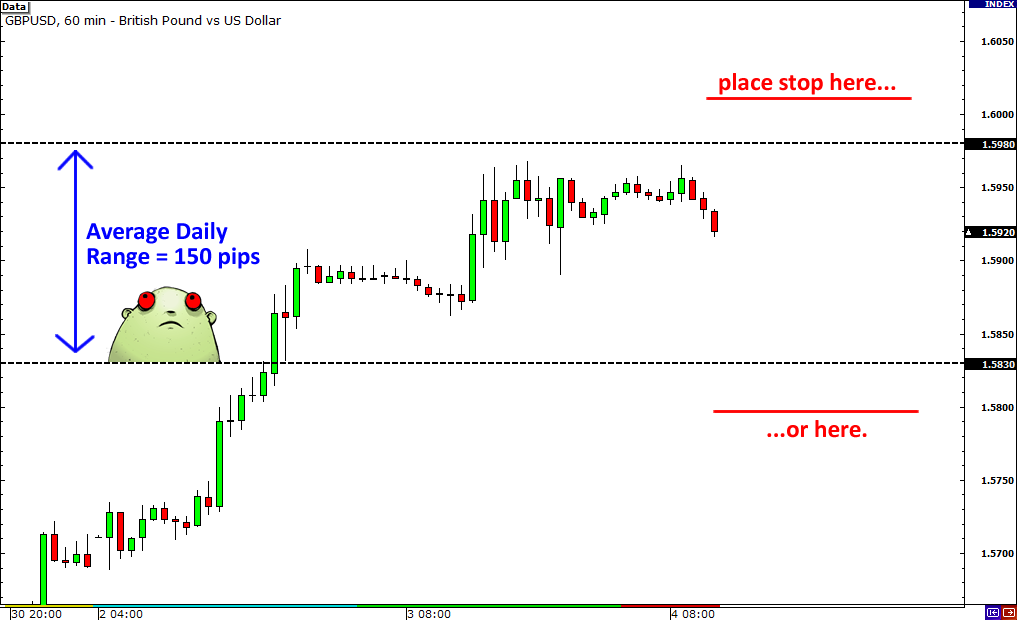Three Quick Indicators to Measure Volatility
Post on: 24 Май, 2015 No Comment

Three Quick Indicators to Measure Volatility
Sep 23, 2013: 10:56 AM CST
When studying a stock or a market to trade, we often need to study the current volatility cycle to determine which strategy to use or avoid.
Measuring volatility is especially important if you wish to use any sort of option strategy with a stock or ETF.
Lets take a look at three quick tools you can use to measure where a stock is trading in its volatility cycle.
Well use the SP500 as our proxy and overlay three simple technical analysis tools:
- High minus Low which simply subtracts the low of the day from the high of the day (pure price)
- Average True Range similar to the high low indicator, but takes into account overnight gaps
- Bollinger Band Width — subtracts the lower BB value from the upper BB Value (standard deviation)
The High-Low formula is a custom indicator that simply returns the price range of a particular trading day.
The Average True Range (ATR) indicator uses the same logic but also takes into account overnight gaps in its formula while calculating the average value over 14 days (default) or any time period you specify.
Finally, the Bollinger Band Width measures the difference of the value two standard deviations above the 20 day mean (average) and the value two standard deviations below the 20 day average.
With the ATR and BB-Width Indicators, you can increase or decrease the calculation period for greater sensitivity.
For example, an ATR look-back period of 20 will be smoother than a period of 10 which would be more spiky.
The same would be true for BB-Width where you could increase or decrease the average (mean) along with the Standard Deviation (1.5, 3, 4, etc).
The goal is to determine the current and potential future volatility by studying the Volatility Cycle from historical prices.
Volatility tends to go through cycles of high phases and low phases. Specifically, a period of low volatility now tends to erupt in a period of high volatility in the future.
A period of high volatility (often associated with a sharp price decline) tends to settle-down into a lower volatility phase in the future.
From a psychological standpoint, periods of complacency/stability tend to move to phases of excitement/instability.
Heres a recent example of Volatility Cycles in Apple ( AAPL ):
As was the case in the highlighted regions of the SP500 chart, Apple ( AAPL ) also shows periods of high and low volatility.
While its far more common that volatility spikes during sell-off phases, we can see volatility rise also during periods of sustained upward price action.
While the indicators are similar, it can be helpful to combine the indicators to get a sense of the broader cycles.
Here are just a few sample strategies you can use depending on the current volatility cycle:
Traders can look for future breakout opportunities to develop during a period of current low volatility.
Options traders can concentrate on net buying strategies during periods of low volatility and shift to net selling strategie s during periods of high volatility.
Traders can also adjust position size to volatility higher periods of volatility call for reduced position size relative to lower periods of volatility that may call for higher position sizes.
Similarly, stop-loss and trade target strategies may be adjusted to play for larger targets with wider stops during high volatile periods and smaller targets with tighter stops during low volatile periods.
However you trade, it can be essential to get a sense of what volatility looks like now, and what may develop in the near future.
Join fellow members to receive daily commentary and detailed analysis each evening by joining our membership services for daily or weekly commentary, education (free education website). and timely analysis.
Corey Rosenbloom, CMT
Corey’s new book The Complete Trading Course (Wiley Finance) is now available along with the newly released Profiting from the Life Cycle of a Stock Trend presentation (also from Wiley).














